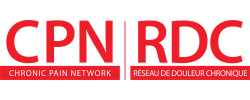| Return |
Patient Evidence Summary

Doctor, I have frequent migraines. Can mindfulness-based stress reduction help me?
In adults who have migraines 4 to 20 days per month, mindfulness-based stress reduction (MBSR) and headache education both reduced the number of migraines people experienced per month.
What is the evidence?
SUMMARY OF FINDINGS
Mindfulness-based stress reduction versus headache education
Outcome at 12 weeks | MBSR | Headache Education | Effect | ||
|---|---|---|---|---|---|
| Number of migraine days per month | 1.6 fewer migraine days per month | 2.0 fewer migraine days per month | Both groups had fewer migraines than at baseline. MBSR was not better than headache education at reducing migraines. | ||
| Migraine Disability Assessment Scorea | Score dropped from 17 to 7 | Score did not change | MBSR may reduce the impact migraines have on ability to continue working inside and outside of home and to participate in social activities | ||
| Migraine Specific Quality of Lifeb | Score dropped from 45 to 34 | Score dropped from 44 to 39 | MBSR may be better at improving quality of life for people with migraines | ||
ahigher score means greater disability
bhigher score means worse quality of life
What kind of study was this?
This was a randomized controlled trial (RCT).
Who? This study included 96 adults (average age 44 years; 92% women; 89% white) who have 4 to 20 migraine days per month and a history of migraines for at least 1 year. People were excluded if they had chronic pain not due to migraines, medical conditions not under good control or if they were unable to attend 8-weekly classes.
What? The study compared MBSR with headache education. People in both study groups were allowed to continue their current migraine medications including ones taken to prevent migraines.
Mindfulness-based stress reduction | vs | Headache Education |
|---|---|---|
MBSR is a mind-body treatment that uses different parts of the brain to change how a person responds to pain. Stress is known to trigger pain so learning to control stress can decrease the intensity of pain and help the person continue to function despite the pain. People in this group were taught mindfulness meditation/yoga. People were asked to attend 2 hours of class per week for 8 weeks and to practice MBSR for 30 minutes daily at home with the help of an audio recording. | People in this group received instructions on what headaches are, how they are triggered, and different approaches on how to manage them. People were asked to attend 2 hours of class per week for 8 weeks. They were not given any special work to complete at home. |
Why was this research done?
Migraines cause people to miss days at work or school, prevents them from doing household chores, and interferes with social activities. Treatments for migraines that are not medication-based are of great interest because they are less likely to have unpleasant side effects. The researchers in this trial expected that mindfulness-based stress reduction (MBSR) would reduce migraine frequency more than headache education. However, they found that both treatments reduced the frequency of migraines by the same small amount. MBSR may help people function better when they have a migraine, but this needs to be proven in a larger study. It is unclear how many study participants completed the MBSR 30 minute daily home practice sessions which may also have affected the study results.
This Evidence Summary is based on the following article:
Wells RE, O'Connell N, Pierce CR, et al. Effectiveness of Mindfulness Meditation vs Headache Education for Adults With Migraine: A Randomized Clinical Trial. JAMA Intern Med. 2020 Dec 14. pii: 2774130. doi: 10.1001/jamainternmed.2020.7090. PubMed
Published: Monday, March 15, 2021
Last Updated: Tuesday, July 13, 2021
Please note that the information contained herein is not to be interpreted as an alternative to medical advice from a professional healthcare provider. If you have any questions about any medical matter, you should consult your professional healthcare providers, and should never delay seeking medical advice, disregard medical advice or discontinue medication based on information provided here.
|
This Evidence Summary was printed from the PAIN+ CPN website on 2025/04/01. To view other Evidence Summaries or to register to receive email notifications about new Evidence Summaries, please visit us at https://www.painpluscpn.ca/Articles/EvidenceSummaries |

|






 , McMaster University
, McMaster University